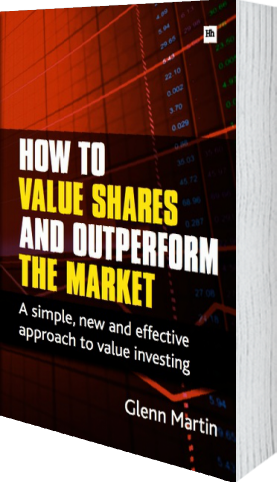How to outperform the market_1
Post on: 7 Июнь, 2015 No Comment

How to outperform the market
All investors should re-evaluate and refine their investment styles and strategies from time to time. As we gained investment experience and knowledge, our view of the market is likely to change and likely to expand how we imagine the extent of our ability to invest. Those who want to try to outperform the marketthat is, realize greater profits than market average-might consider active trading strategies, even if only for a portion of their portfolio. Here we explain what active trade is, how active traders view the market, equipment and investment vehicles and finally, the risks associated with their style.
What Is The Trade Off?
The best way to understand the trade off is to distinguish it from the buy-and-hold investing, which is based on the belief that a good investment will be profitable in the long term. This means ignoring day-to-day market fluctuations. Use the strategy of buy-and-hold investors, this kind of indifferent to short-term for two reasons: first, because he believed the momentary effects of short term movement is very small compared with the long-term average, and second, because the short-term movements is nearly impossible to predict with precision.
A trader who is active, on the other hand, are not interested in exposing his investments to short-term effects loss or loss of opportunity for short-term gains. It is not surprising then, that active traders looking back on the long term average is not as standard but as hope to overcome a run-of-the-mill. To exceed the standard, or outperform the market, the trader realized he should look for in potential profit while the market trend, which means trying to see the trends as it started and predicts where it will go in the near future.
Below is a chart that shows the difference between the long and short term movement of the market. Note that although security moves to the top from time to time, it is experiencing a trend that is smaller in both directions along the way.
Performance and short term
Traders are active because to them the importance of short-term market activity was enlarged-this market movement offers an opportunity for capital gains accelerated. A style defines the time frame trader where he is looking for trends. Some are looking for trends in the span of a few months, some within a few weeks, and some within a few hours. Because of the shorter period will see a more definitive market movements, a dealer of analyzing shorter time frame would be more active, executing more trades.
A large number of trade does not always equal larger profits. Outperform the market by no means maximizing your activities, but You maximize the chances with strategy. A dealer who will actively seek to buy and sell (or vice versa in case of shorting) on the two extremes of trends within a certain period. When buying a stock, a trader can try to buy it at the lowest possible point (or upper turning point, otherwise known as the bottom) and then sell it when there are signs that they have reached a high point. These signs are generally distinguished by technical analysis tool, which we discuss below. The merchants trying to buy and sell at the extremes, the more aggressiveand riskywas hers or his strategy.
Learn to Trade Forex with FXCMS free Trading Guide
Maximize profits or beat the market is not just about reap the benefits, its also about avoiding losses. In other words, traders will keep an eye out for any signs that security is to take a surprising turn in unwanted directions. When these signs occur, traders know that its time to get out of an investment and seeking profits elsewhere. A long-term traders, on the other hand, remain invested in security if he has confidence in value, although it may be having a shift down-buy and hold investors ought to tolerate some loss that traders believe it is possible to avoid.
Technical Analysis
You need a specific analysis techniques and tools to distinguish when the trend started and when it will end. Technical analysis of price trends in interpreting specialties, identify the best time to buy and sell the security by using graphs. Unlike fundamental analysis, technical analysis, see the price as a very important factor that tells the security direction shall be taken in the short term. Here are three principles of technical analysis:
-For the most part, current stock prices already reflect the forces that affected him-such as changes in political, social and economic — as well as the perception of the people about these events.
-Prices tend to move in trends.
-History repeats itself.

Of the three principle appears complicated design discipline specific indicators to help traders determine what will happen in the future. The indicator is the way in which price data are processed (usually by means of a calculation) to clarify the price pattern, which becomes clear when the results of the calculation of this indicator is plotted on the graph. Displayed together with the history of prices plotted, these indicators can help traders distinguish trend lines and analyze them, read the signals emitted by the indicator to select the entry to or exit from the trade. Some examples of different types of indicators, moving averages, relative strength and oscillator.
Fundamental analysis can be used for trading, but most traders who are trained and experienced in charting and technical analysis techniques. It is a combination of science and art that requires patience and dedication. Because the timing is very important in active trading, efficiency in technical analysis is a major determinant of success.
The Influence Of
Short term investment approach offers the opportunity to realize a capital gain not only by means of an analysis of the trends, but also through a short-term investment tool that reinforces the potential profits given the amount invested. One of the techniques that make use of, which is often carried out by something called the margin.
The Margin is simply the use of borrowed money to make a trade. Lets say you have $ 5,000 to invest: you can, not only this amount of investment, open an account and receive an additional margin of, say, $ 5,000 to invest. This will give you a total of $ 10,000 that can be used to make a trade. So, if you invest in stocks returned 25%, Your $ 10,000 investment became $ 12,500. Now, when you repay the original $ 5,000, you would be left with $ 7,500 (well assume zero interest charges), giving you a profit of $ 2,500 or a return of 50%. Do you invest only $ 5,000, your profit would have been only $ 1,250. In other words, doubled profit margins.
However, because the potential upside is exacerbated, so the downside risk. If the above investments instead of having 25% reduction, you will experience a loss of 50%, and if the investment has decreased by 50%, you will lose 100%. You may have already guessed, with leverage, a trader could lose more than your initial investment. Thus it was the trade that should be used only by experienced traders who are skilled in the art to the time entry and exit from the investment. Also, because the margin of borrowing money, the less time you take to pay it back, a little interest you paid on it. If you take a long time to try to rake in profits from trading, margin costs can eat into overall profits.
The Risk Of
Active trading offers potential for pulling from above average, but like almost all the other things that are interesting, it can not be achieved with success without the cost and risk.
The shorter time frame that traders are devoted offers huge potential, but, because the market can move fast, the trader must know how to read it and then react. Without skill in discerning and time entry signals.














